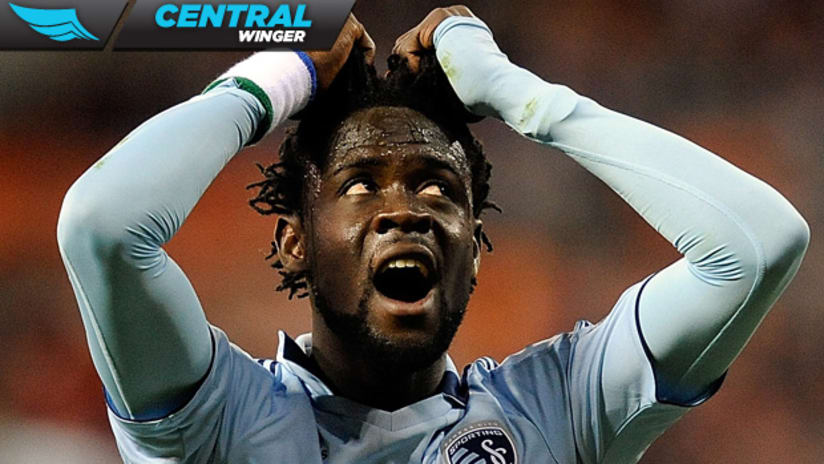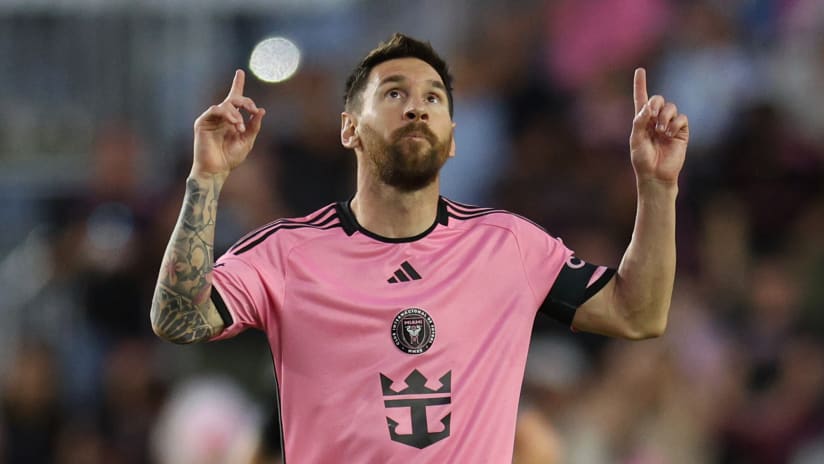Not all shots are made the same.
I remember playing a college soccer game away at a specific school that was particularly frustrating. The gentleman running the soccer-specific scoreboard – which included things such as "shots" – enjoyed being particularly liberal when crediting the home team with a shot. By half time, the scoreboard read 20 shots to one – but only 1-0 in favor of the home team. At this point (even without the egregious score keeping), it was clear to me that shots mean nothing. At least, without added context.
Shots, like most easily collected measurements of our game, are not created equally. For example, so far this season in MLS, there have been more than 250 shots taken from further than 30 yards from goal. Of these 250 shots, only three have been goals. That's one goal every 83 shots. Conversely, there have been over 1200 shots taken from within six yards of the goal. Of these shots, over 100 have resulted in goals (Yes, a majority of the league's total goals come from inside the six). That's one goal every 12 shots.
Yet on the stat sheet, low-percentage, 30-yard gambits are tallied just the same as efficient, six-yard blasts past the opponent's keeper.
The manner in which we collect shooting statistics is tremendously flawed. Luckily, with the help of Opta's chalkboards available for every MLS game, we can begin to understand which shots are good – and which players are finishing them.
OPTA Spotlight: Just how lethal are New York in front of goal
One of the common tools used by statistical analysts (both soccer related, and otherwise) is called regression. By looking at different variables, such as the vertical and horizontal coordinates of where a shot was taken, it is possible to develop a model that predicts the likelihood of a particular shot resulting in a goal. For example, using a model created from this year's MLS shooting data, a shot from the top of the 18-yard box has a 17 percent chance of resulting in a goal. Similarly, a shot from the center of the six-yard box has greater than a 50 percent chance of resulting in a goal. While this model is far from perfect – since it fails to compensate for important factors such as defensive pressure and goalkeeping quality – it does provide us with some worthwhile results.
If we award players for the difficulty of situations in which they have created goals instead of the sheer number of shots they have taken, we can perhaps gain better insight into which strikers (and supporting service) are the most efficient.
By looking at the likelihood of each of a player's shots resulting in a goal, and adjusting for the number of goals actually scored by that player, New York Red Bulls' Kenny Cooper finds himself on top – scoring seven goals when the quality of his chances suggest that he should have only scored 2.45. Kei Kamara, on the other hand, leads the league in expected goals at 4.75, but has only translated those chances into three tallies.
MLS Leaders - Best Expected Goal Difference
Name |
Shots |
Goals |
Expected Goals |
Difference |
Kenny Cooper |
17 |
7 |
2.45 |
4.55 |
Thierry Henry |
26 |
7 |
3.01 |
3.99 |
Chris Wondolowski |
24 |
7 |
4.30 |
2.70 |
David Estrada |
15 |
4 |
1.69 |
2.31 |
Darlington Nagbe |
10 |
3 |
0.90 |
2.10 |
Gabriel Gomez |
8 |
2 |
0.54 |
1.46 |
Nick DeLeon |
9 |
2 |
0.62 |
1.38 |
Ricardo Villar |
8 |
2 |
0.76 |
1.24 |
Sebastien Le Toux |
7 |
2 |
0.76 |
1.24 |
Juninho |
3 |
1 |
0.06 |
0.94 |
MLS Leaders - Most Expected Goals
Name |
Shots |
Goals |
Expected Goals |
Difference |
Kei Kamara |
33 |
3 |
4.75 |
-1.75 |
Chris Wondolowski |
24 |
7 |
4.30 |
2.70 |
Danny Koevermans |
15 |
1 |
3.30 |
-2.30 |
Kris Boyd |
18 |
3 |
3.21 |
-0.21 |
Thierry Henry |
26 |
7 |
3.01 |
3.99 |
Fabian Espindola |
23 |
3 |
2.68 |
0.32 |
Kenny Cooper |
17 |
7 |
2.45 |
4.55 |
Blas Perez |
11 |
3 |
2.37 |
0.63 |
Maicon Santos |
18 |
3 |
2.37 |
0.63 |
Olman Vargas |
11 |
1 |
2.32 |
-1.32 |
Shots are not the only statistic that can benefit from increased context. Each pass, for example, is not completed with the same level of difficulty. How valuable are passing percentages when we don't adjust for the difficulty (and possible reward) of each pass?
Let's keep a careful eye on the stats that we consume. And remember that not all stats are made equally.
Devin Pleuler is a computer science graduate from Wentworth Institute of Technology in Boston, where he played on the men's varsity team as a goalkeeper. He's certified as a coach through both the USSF and NSCAA, and writes the Central Winger analytics column for MLSsoccer.com.











